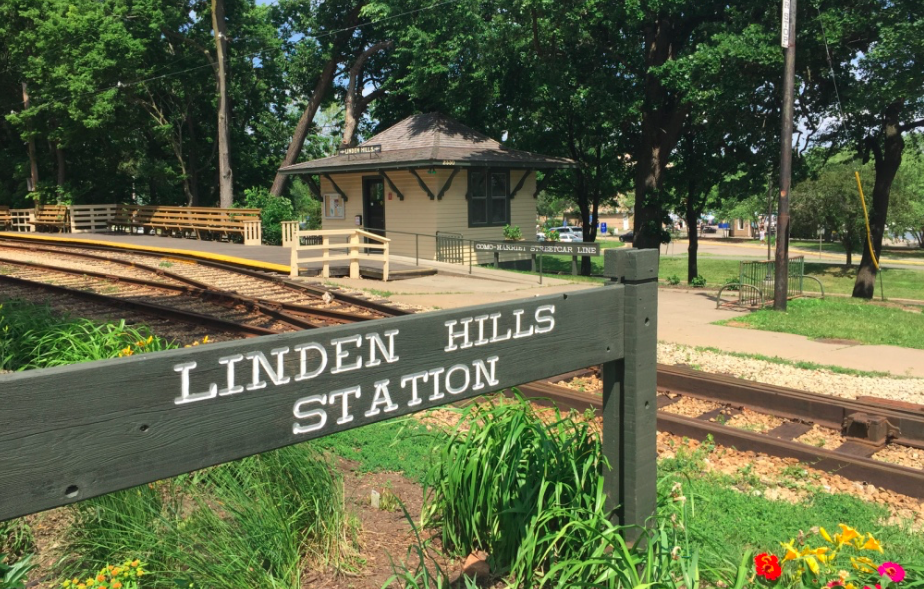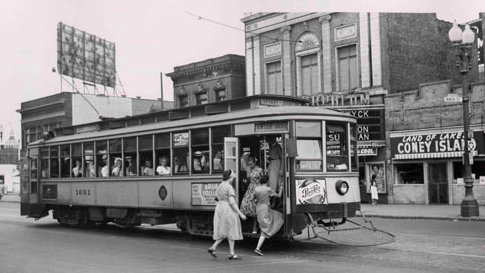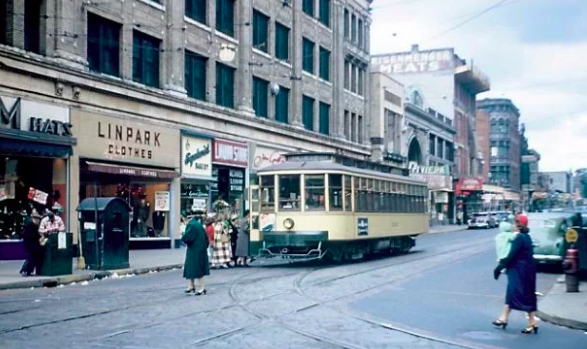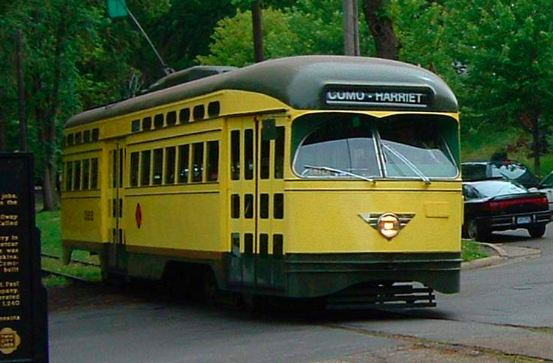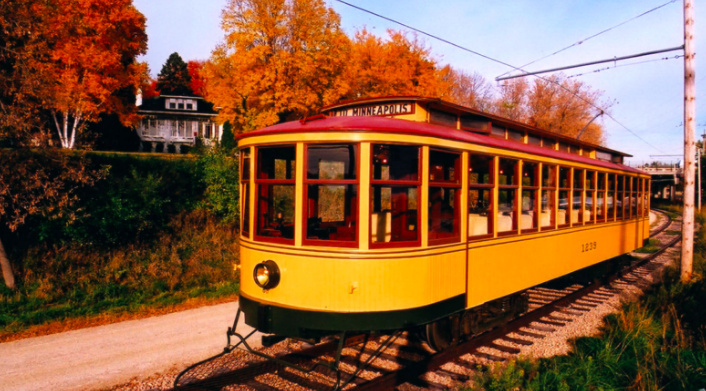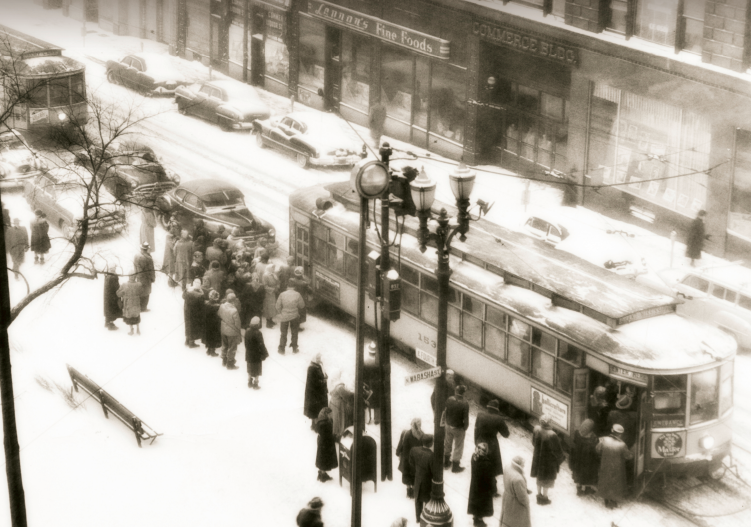Aaron Issacs - Como - Harriet Streetcar Line
/“We’re the guys who were fascinated in trains when we were little kids and didn’t get over it.”
Aaron Isaacs definitely is NOT over trains: not the cane-backed benches in the car, not the clickety-clack of the wheels over the rails, not the friendly conductor waving riders aboard.
Aaron’s love of the Twin Cities’ once largest-in-the-nation streetcar system shows in his impassioned facility to spout facts, cite dates, catalog tens of thousands of transit-focused urban photos, locate remnant parts, and celebrate the Minnesota Streetcar Museum as a moment in time that is evolving with the times.
He is unapologetic about a collective spirit – and his own - that elevates rail travel as romantic and enduring: “I have never met someone who is nostalgic for a bus. There is something about this,” Aaron says as he sweeps his arm along the track of the Como-Harriet Streetcar Line, “that gets people.”
Aaron, 69, is an expert on a transit system that has a long history in the Twin Cities and seemingly disappeared in an instant as buses and automobiles claimed America’s travel habit, if not its imagination.
As early as 1880, residents in Minneapolis and St. Paul rode to work, ran errands, and visited the surrounding countryside by rail. Early streetcars were pulled by horses; the modern streetcar was powered electrically, connected to overhead power lines by a flexible, prominent arm called a “trolley.”
By 1920, Twin City Rapid Transit, the local streetcar system, operated an extensive rail network (523 miles) with 41 lines, nearly 1,000 streetcars and 238 million rides annually.
By the early 1950’s, however, ridership in the Twin Cities (as elsewhere in the US) declined and the streetcar system was scrapped for buses. Concrete was poured over the rails then covered with asphalt, and the cities’ once-thriving rail network was buried.
“Everyone loved the streetcars, but no one was riding them,” says Aaron of the waning days. Many of the streetcars were burned and the metal was salvaged. Some of the cars were donated to transit museums or sold to other cities (Mexico City, Newark, San Francisco); others were stripped down and sold as cheap, pre-fab buildings.
In the early 1960’s, Aaron’s father, George Isaacs, and a cohort of fellow rail fans (including young Aaron) determined to keep the streetcars alive, despite the system’s dismantling.
George, an electrical engineer by trade, recruited volunteers – retired mechanics, blacksmiths, motormen – to repair and refurbish 3 of the original streetcars. By 1971, the cohort convinced the Minneapolis Park and Recreation Board to allow the group to operate renovated streetcars on 2 miles of abandoned, but still intact, rail line from Lake Harriet to Bde Maka Ska (formerly known as Lake Calhoun).
Today, Aaron runs the Minnesota Streetcar Museum (2330 W 42nd St, Minneapolis), an entirely volunteer-run organization, which operates both the Como-Harriet Streetcar Line in Linden Hills and the Excelsior Line on Lake Minnetonka. Aaron has volunteered with the Museum for over 40 years, he edits the museum’s quarterly history magazine, and has authored three books on Minnesota streetcar history.
About 40,000 visitors ride the Como-Harriet line annually, with streetcar rides available spring to fall. Aaron estimates 115 volunteers operate and maintain the streetcars, repair overhead electric lines and tracks, identify and collect operable parts, tend the museum shop, and catalog and post photographs of old streetcars and historic train trivia in their electronic archive.
“We are not just a museum,” Aaron asserts. “We are living history.”
Why do kids and families love the streetcar? “Well,” offers Aaron, “the streetcar feels like an amusement park ride, but it’s not scary. For kids aged 2-6, if something is large and mechanical, they love it.” The token machine is especially of interest, hands and heads poke out the large, open windows, and the kids are curious about the “cow catcher” at the front of the car. Vintage advertisements, the polished wood floors, and the conductor’s foot bell offer authentic charm.
Families host birthday parties for kids with a ride on the Como-Harriet Streetcar. The Museum holds a Halloween Spooky Trail with ghosts and costumes on the “Transylvania Trolley” each October, and a ride with Santa on the “Holly Trolley” closer to Christmas time.
But big kids love the streetcar as well, especially those interested in urban planning and history. Aaron points out that the “streetcars really were what developed the city,” likewise building a sense of community in and around Minneapolis and St. Paul. Commercial nodes, shopping districts, and far away outposts grew up around streetcar stops and supported residential areas and new development. And when it was hot, before air conditioning became common, “People would take their kids on the streetcars at night to ride around and cool off.”
Sweltering summers aside, nostalgia for the trains continues. “People who grew up here are nostalgic for the early days because of the community created by the streetcars,” says Aaron. “The technology of today – the automobile, the Internet – kind of makes us do things by ourselves, in our self-contained pods.” Aaron and the Streetcar Museum remind us that “people from every stripe, every level of society, travelled together on these things.”
Photo credits: Tracy Nordstrom and Minnesota Streetcar Museum
For more information:





